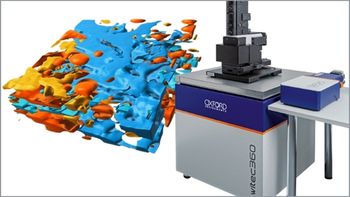
SERS-Based Skin Cancer Detection Method Tested
Scientists from East China University recently tested a new approach for early melanoma detection based on surface-enhanced Raman scattering (SERS) spectroscopy.
In a recent study published in Spectrochimica Acta Part A: Molecular and Biomolecular by scientists from East China University of Science and Technology in Shanghai, China, examined a new approach for early melanoma detection based on surface-enhanced Raman scattering (SERS) spectroscopy.
Scientists and clinicians alike are searching for new detection methods for melanoma, and spectroscopy could be a potential option. Melanoma is a type of skin cancer that develops when melanocytes (cells that give skin a tan or brown color) start growing out of control (2). Melanoma is less common than onther types of skin cancer, making up just 4% of skin cancer cases, but it is more dangerous because it can easily spread to other parts of the body. Even though melanoma is rare, it can be deadly for patients if not treated early. The cancer accounts for 75% of skin cancer deaths. While early melanoma detection leads to a 98% cure rate with surgery, survival plummets to 17% in advanced stages.
Read More:
One way that scientists can detect melanoma is through reactive oxygen species (ROS), which are a type of unstable molecule that contains oxygen and easily reacts with other molecules in a cell (3). These species can be vital in cellular signaling and homeostasis, though overproduction can trigger oxidative stress and potentially invoke melanoma progression. Monitoring ROS’ impact on cancer-related transcription factors can enable early detection of melanoma. Namely, superoxide (O2·−) detection, vital for melanoma diagnosis, can be enhanced with fluorescence and deliver exception visualization. However, this can present challenges, such as the risk of cellular damage due to high-energy light exposure, substantial financial costs, time-consuming protocols, and the limitation of single-time detection, which requires precise delivery of fluorescent sensors and makes the process more difficult.
Read More:
To rectify these issues, the scientists decided to test the process using a method based on SERS combined with transparent polymer microneedles. SERS is a technique that enhances Raman scattering of molecules that are supported by nanostructured materials (4). Photocrosslinked NOA61 photocuring adhesive was used to prepare transparent microneedles, with NOA61’s high sulfhydryl content facilitating chemical bond formation and providing polymers exceptional light transmission properties. SERS microneedles were constructed for in situ detection, with them being able to contribute to anchor gold nanoparticles (Au NPs) functionalized by p-mercaptobenzoic acid (PATP). A REDOX reaction occurred between PATP and O2·−, resulting in the creation of dimethylaminoborane (DMAB) and subsequent changes in Raman signals.
Based on the quantitative relationship between the change of peak area ratio at 1042 cm−1 and 1077 cm−1 and the concentration change of O2·-, a standard curve with a linear range of 0–480 ng/mL was created. The microneedles were successful in tracking melanoma progression in mice, establishing a fundamental correlation between O2·- concentration and melanoma stage. Though there is more work to be done, the benefits of this approach, including convenience, in situ applicability, and low cost, can potentially offer novel insights for non-invasive in situ detection, potentially enhancing disease monitoring and diagnosis. This will help SERS spectroscopy join other techniques, like Fourier-transform infrared (FTIR) spectroscopy, in helping the fight against melanoma (5).
References
(1) He, M.; Jin, L.; Wang, F.; et al. Simple, Ultrasensitive Detection of Superoxide Anion Radical Mutations in Melanoma Mice with SERS Microneedles. Spectrochim. Acta Part A: Mol. Biomol. Spectrosc. 2024, 316, 124292. DOI:
(2) What Is Melanoma Skin Cancer? American Cancer Society 2024.
(3) Reactive Oxygen Species. U.S. Department of Health and Human Services 2024.
(4) Han, X. X.; Rodriguez, R. S.; Haynes, C. L.; et al. Surface-Enhanced Raman Spectroscopy. Nat. Rev. Methods Primers 2021, 1, 87. DOI:
(5) Shakya, B. R.; Teppo, H-R.; Rieppo, L. Discrimination of Melanoma Cell Lines with Fourier Transform Infrared (FTIR) Spectroscopy. Spectrochim. Acta Part A: Mol. Biomol. Spectrosc. 2021, 254, 119665. DOI:
Newsletter
Get essential updates on the latest spectroscopy technologies, regulatory standards, and best practices—subscribe today to Spectroscopy.





